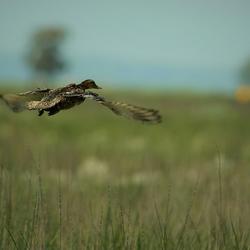Fish and Wildlife Disease
What is Avian Influenza (AI)?
Distribution of CWD Expanding
Chronic Wasting Disease continues to spread across North America
3 Cool Ways USGS is Studying Bats in National Parks
USGS and international team identify the pathogen responsible for 2022 die-off of long-spined sea urchins across the Caribbean
USGS is the lead Federal agency for free-ranging wildlife disease research and surveillance. Our capabilities enhance the understanding of wildlife disease ecology and epidemiology as well as inform the development of decision-support and control tools. USGS wildlife disease experts provide technical assistance as needed to manage wildlife disease and conduct cause-of-death investigations.














